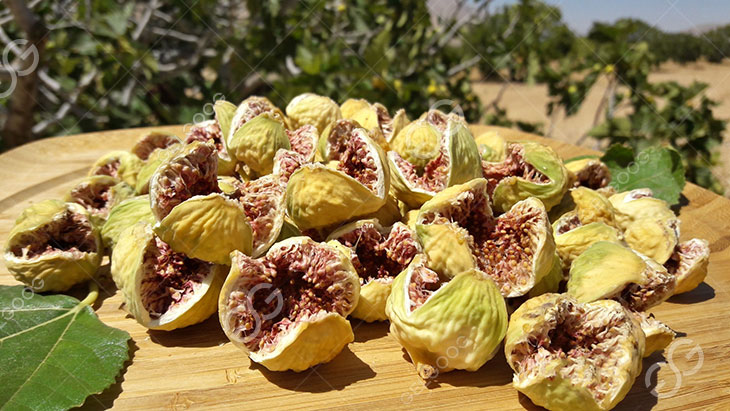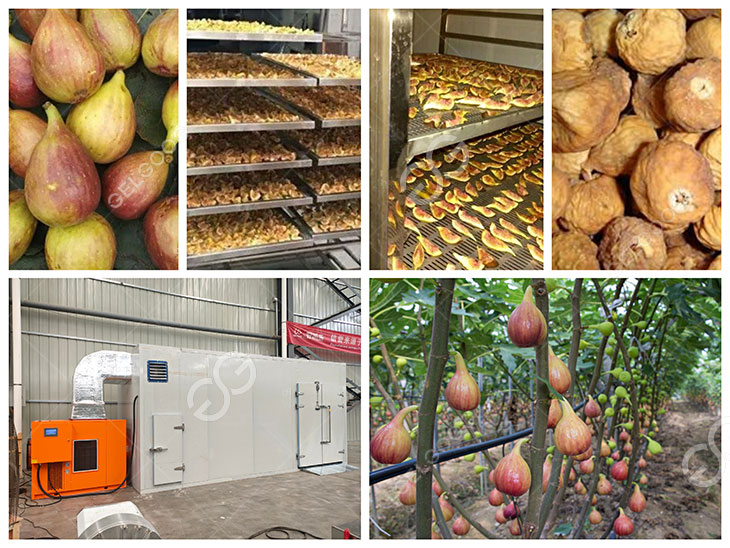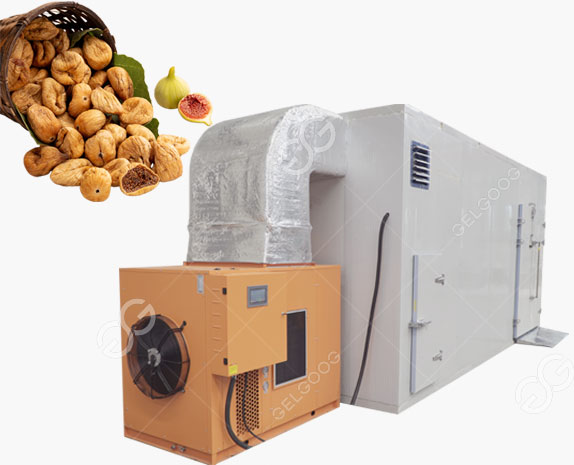Traditional fig drying generally uses natural drying, which is restricted by the weather and site; some factories use steam drying, which is difficult to control the temperature, resulting in product drying quality problems; large factories mostly use electric heating ovens, which consume a lot of electricity, cost high, and The electric heating temperature is high, and the uneven heating affects the drying quality of figs, causing dangers such as burning or fire.

The energy-saving fig heat pump dryer adopts an advanced control system. The fig drying room automatically controls the temperature and humidity, and can control different drying temperatures and dehumidification in multiple time periods. Moreover, the air energy dryer has low drying costs. 1 kWh of electricity is equivalent to the heat generated by heating 4 kWh of electricity, and 1 kWh of electricity can dehydrate 4 kg in 1 hour.

Heat pump fig drying process
For reference, it depends on the specific drying technology.
First fig drying process: heat preservation at 75-80 degrees for 3-5 hours; heat up to 60-65 degrees for 13 hours, and heat up to 50-55 degrees for 3 hours, for a total of 20-21 hours.
Secons fig drying process: heat preservation at 75-80 degrees for 3-5 hours; heat up to 50-55 degrees for 16 hours, and heat up to 55-60 degrees for 1 hour, for a total of 19-20 hours.
Note: The hot air blower does not stop and is recorded on an hourly basis.
After the seasoned figs are placed on a plate, they are sent to the drying room, with 10 to 15 centimeters as a layer, and then the temperature is adjusted in stages at 50°C, 65°C, and 50°C for staged drying. Finish off with figs that don't stick to your hands. During the drying process, pay attention to the moisture removal in time to prevent the drying time being too long or the color of the product being too dark.

